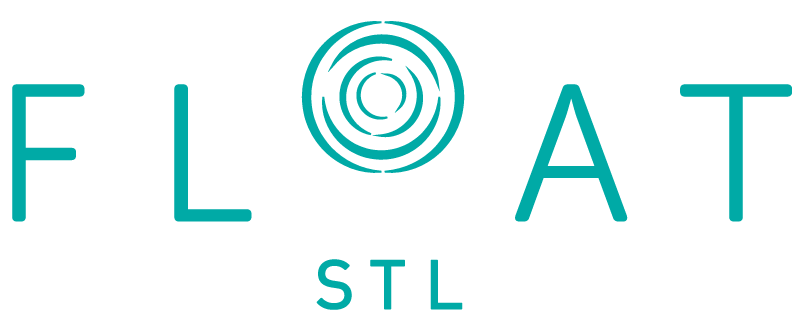A few months ago, we introduced you to The Law of Reversed Effort, which states: the harder you try to achieve mental silence, the more mental quietude will escape you. While it is tempting to resist mental noise, we made the suggestion that you practice acceptance instead. For instance, if during your float, your mind is thinking about the 10+ things you have to accomplish at home and work next week? Acceptance looks like acknowledging that this activity is happening, permitting it to happen, and taking on a witnessing stance. Meaning, see if you can just watch the activity. Don’t resist it. Let it occur, pass, and perhaps re-occur and pass again. And if, during your float, you feel frustrated that your mind is active? Acceptance looks like acknowledging the activity and the frustration.
So, maybe you’ve given this a shot? Very cool! If you can remember to tell us about your experience, we would love to hear it.
As promised, this blog post is going to offer several practices that can facilitate a state of deep relaxation in the float tank. As I describe them, try to think of them as a practices (not formal to-dos). We recommend an attitude of curiosity and play, not pressure. Try to remember that there isn’t anything to master and that practice makes progress, not perfect.
Practice Letting Go
Breath Awareness
Since no external stimuli disturb you during your float, the tank is a perfect environment to practice breath awareness.
- Abdominal Breathing – when you are floating, notice where your breath is located in your body. If you notice that your breath is short or in your chest, allow your breathing to shift down to your belly. Don’t force it, just follow your breathing with your awareness, and gently direct your breath to grow in to your belly. Breathing into your belly de-activates the autonomic nervous system (which produces the stress response “fight-flight-freeze”) and activates the parasympathetic nervous system (which produces the relaxation response “rest and relax). While you are breathing, your mind can count your belly breathes, or mentally label, “(in-breath) breathing in, (out-breath) breathing out.”
- Nose breathing – focus your awareness on your breath as it enters and exits your nose. Notice the subtle coolness as you inhale air through your nostrils, and then notice the subtle warmth as you exhale. If you notice thoughts arise in your mind, just allow them to pass, and return your attention to your breathing.
Practice Self-Regulation with Visualization
Visualization Methods
Practicing visualization in the float tank can help you employ and strengthen your untapped internal resources. Visualization is a powerful tool that you can use to deepen relaxation, progress towards a goal, inspire creativity, or find resolution around an unresolved issue.
- Body imagery – start with the nose breathing practice above, and add a visualization practice. When you inhale, imagine the air you are breathing is full of pure white light. As you pull this light in through your nostrils, visualize it travel down to your lungs and into your abdomen. Visualize this nurturing light expand into your belly and travel to any part of your body that comes to mind. Allow this light to exit when you exhale, and re-enter upon inhalation. Inhale the light, exhale the light. If you would like, you can visualize negative energy (such as darkness, waste, internalized energy, fatigue, and distortions) leave your body upon your exhale. Inhale pure, golden, re-vitalized light. Allow your creative mind to visualize this happening. It will take on a rhythm. Allow yourself to get caught up in it. Let that rhythm move you.
- In the Mind’s Eye – strengthening your ability to visualize improves your ability to self-regulate your emotions, thoughts, perceptions, and actions. You can use whatever content spontaneously occurs to you. Here are a few ideas:
- visualize someone you know well. See his/her face, see the color of his/her eyes. See how his/her face smiles. How is this person responding to you? Is s/he saying something to you? Listen. What is being said?
- Visualize a character. A figure of some sort. Can you visualize this figure running, breathing deep, climbing a mountain, or relaxing?
- Visualize a shape. A cube, pyramid, or sphere. See this shape. Can you change its color? Can you move it? Can you make it larger or smaller?
- If you are an athlete, imagine yourself in your sport. For instance, imagine hitting your golf or tennis ball in that ideal “sweet spot.” Feel that sweetness. Imagine yourself climbing a mountain, or hiking way up high. Maybe you are a triathlete? Visualize yourself persevering, relaxing into your bike, or pushing through the water in exactly the rhythm that is right for your body. Visualize yourself in flow. Feel the flow. Breath into it. Allow it to be real.
We hope this post provides you with useful practices to explore during your floats. Have fun!
The content from this blog post was informed by the wonderful book: The Book of Floating – exploring the private sea, by Michael Hutchinson (pages 127 – 133).
If you would like to learn more practices and read in-depth descriptions of the aforementioned practices, please resource this book. We have a few copies for your enjoyment in our pre/post float area, and a stack of books for sale if you want to take one home. It’s a great book. Easy to read, easy to digest, and lots of helpful information!
